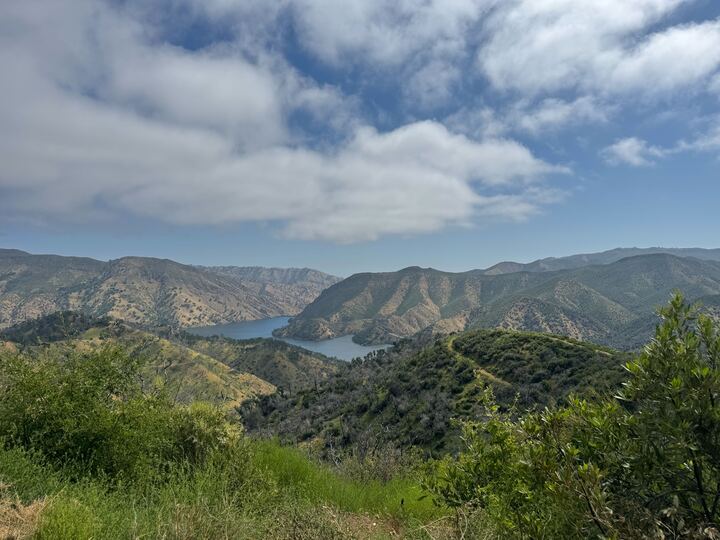Granaries, Acorns, and the Science of Getting it Right
Today was a fruitful day for all of us in Section B! Crystal, Stephanie, & Mia headed out into the field early to collect more data while the rest of us met in the Briggs Hall classroom, where Marlee – our fabulous MC for the day – led us through a group discussion. Here’s a detailed breakdown of our meeting minutes:
Meeting Minutes |
|---|
Time | Activity | Notes |
|---|
Before class | Crystal’s crew left |
|
12:10 PM | Everyone else met in Briggs Hall classroom |
|
12:15 PM | Satellite assessment team shared progress | |
12:20 PM | Data collection teams shared findings from this week | |
12:30 PM | Collaborative discussion: Evaluating data categories & Brainstorming hypotheses | |
1:30 PM | Protocol Refinement |
|
1:55 PM | Wrap-up – Work distribution | |
2 PM | Crystal’s crew returned |
|
|
Some of our granary trees via satellite imagery
|
*Discussion: It became clear we needed to tweak our methods after some issues arose with how data was collected on Wednesday. There were inconsistencies with the measuring of strata (0.5, 1, and 1.5 meters), placement of the PVC square for the neighborhood assessment, and acorn-related descriptions. Additionally, there was uncertainty with the acorn survey because some granary trees lacked holes and/or acorns in the lower strata of the tree. All of this pointed to the need to revisit our methods, get everyone on the same page, and make the whole process more efficient.
Why are Methods so Important?
methodology: "a body of methods, rules, and postulates employed by a discipline; a particular procedure or set of procedures" (Merriam-Webster)
Precise methodology is at the heart of "good" science – it allows researchers to move through the scientific method with clarity and consistency. Each step builds on the one before: observations lead to questions, which lead to hypotheses, which guide experiments, and so on...
Without clearly defined, repeatable methods, the whole process falls apart. Experiments become unreliable, results hard to interpret, and conclusions less trustworthy. Careful attention to methodology is necessary to ensure every step is adequately fulfilled.
 |
| Scientific Method visualized as a cycle |
So... what changes did we implement?
- We removed one of the strata in our tree stratification system, so now only 2 height categories (0.5-1m, 1-1.5m)
- We will now be collecting acorns and bringing them back to lab for analysis
- Acorn presence & acorn occupancy categories merged into "Acorn status"
- We will now be using the 1st hole selected (using the finger-to-nose method), rather than the 5th one
- We will be centering the PVC square when using it for neighborhood assessment
With our current data and potential hypotheses in mind, the above are adjustments we collectively determined. Some promising hypotheses include the relationship between hole diameter and acorn status, bark thickness and acorn retention, or hole orientation (N, S, E, W) and acorn status. The data we're collecting has shaped up to be more time-consuming than we anticipated, but each and every factor has the potential to shed light on various aspects of acorn woodpecker granary behaviors, preferences, community structures, and more. No matter how complex the dataset, strong methods can keep everything manageable and meaningful.
"I think you can have a ridiculously enormous and complex data set, but if you have the right tools and methodology then it's not a problem." - Aaron Koblin
We've made excellent progress honing in on our system and variables, but with T minus 3 weeks until the end of the quarter – it's go time! Please make sure you're staying active in the Slack and as organized as you can be with your materials.
Before Wednesday (5/21):
Please review the updated protocol in our shared Google Drive folder and familiarize yourself with the new data sheet we will be using. It's important that we all have a clear understanding of what data we're collecting on Wednesday – please don't hesitate to reach out in Slack (or during the debrief prior to departure) if you have any questions!
To add, continue thinking of potential hypotheses for our data as we prepare to begin our manuscripts.
Agenda for Wednesday (5/21):
(Crystal's Crew coordinates directly with her prior to Wednesday.)
Data Collection Teams
10:00 am – Meet at Mann parking lot & pre-departure debrief
10:10 am – Depart to field sites (Cahill, Quail Ridge) in same groups as last week
11:00 am – Arrive at field sites and offload equipment
Each group should have calipers, compass (or phone), PVC square, DBH tape, flagging tape, Sharpie or pen, bags, provided data sheets & protocol, clipboard, cork opener, chisel, increment bore, auger wrench, drill, and tongs (as needed).
11:10 am – Continue data collection (in groups of 2-3) following updated protocol
1:00 pm – Head back to vans and load up
1:15 pm – Leave for campus
1:45 pm – Arrive on campus & hear from next MC, Megan
1:55pm – Return any samples to lab (069 Briggs Hall)
Satellite Assessment Team
10:00 am – Meet at Briggs Hall classroom
10:05 am – Add the 5 new Quail Ridge granary coordinates to map
11:00 am – Test out color/filter options on maps in Image J
12:30 pm – Begin taking tree measurements
2:00 pm – Pack up for the day
Reminders:
- Don't forget to bring water, sunscreen, and lunch for on-the-go!
- Also consider bringing bug spray and a portable charger (:
- Try to use the restroom prior to departure if possible.
- Keep an eye out for rattlesnakes & do a tick check when you return!







Comments
Post a Comment